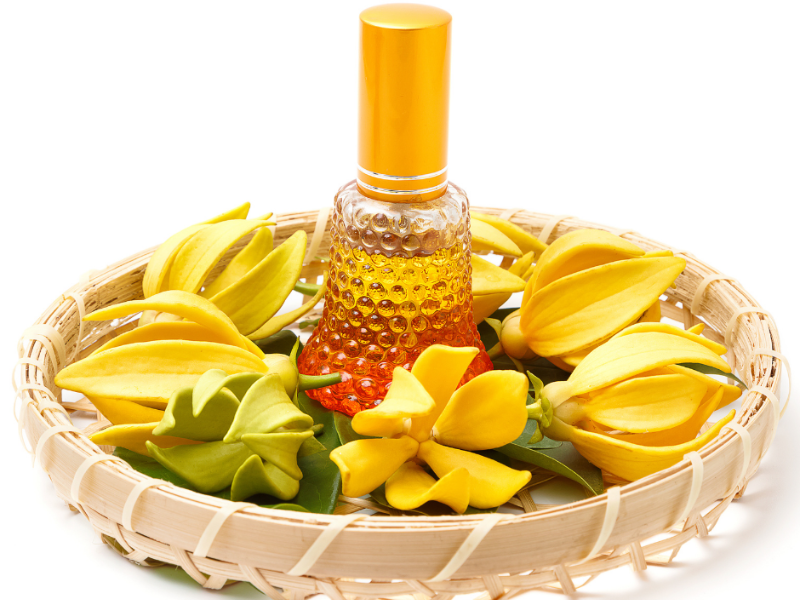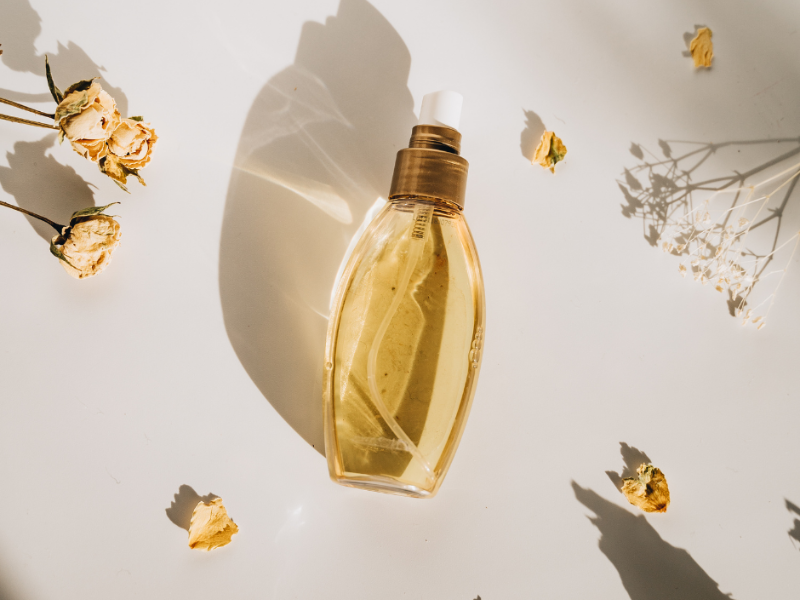Fragrance making does not require a degree in chemistry - all you need is a little imagination and a taste for luxury. Want to make a scent at home, but not sure how?
Exploring the world of essential oils is fun and exciting. Getting to know all the aromas and benefits associated with each oil often arouses curiosity and passion. Essential oils are one of the main ingredients in perfumes from their invention and interest in the eventual creation of their own perfume. Have you found a couple of essential oils that you love and think would be a wonderful perfume? You may have toyed with the scents, but you’re not quite sure how to mix them to make the scent stand out like a professionally crafted perfume. Follow our simple guide on exactly how to make a perfume with essential oils.
Learn the notes of the scent
Perfume oils consist of top notes, middle and base notes. Top notes are the first notes you feel. While there are no hard and fast rules, they can be dominant for about 15 minutes. Middle or heart notes are what perfume carries the most, and they are most obviously about 15 to 45 minutes. Base or base notes are the most enduring notes and give your fragrance longevity. Without base notes, your scent can fade. Base notes can last for hours.

- Top notes they are known as the first wave in perfume. Since these are your first impressions of a fragrance, they don't last long. They are light, fresh and fleeting. Everyone citrus fruits, spices and most herbs are classified as top notes. Imagine fruits like lemon, orange or bergamot.
- Middle notes, as we said, last a little longer on the skin. middle notes are also called “heart” scents because they usually give it character they develop within 10 to 15 minutes after the top notes and can stay on the skin for several hours. Usually floral (rose, jasmine, geranium), herbs (rosemary), or sometimes even spices (coriander) these notes.
- In the end, lower or base notes - This is the foundation of the scent, which lasts for hours - sometimes days - on the skin or clothing. They often enhance the top and middle notes, but also ground the whole experience. They are rich, syrupy and heavyand - think of vanilla, cedar, patchouli, sandalwood, musk and amber.
Although the way you combine fragrances is entirely up to you, here are some aromatic guidelines to help you:
Citrus notes are the most common top notes because they are powerful and persistent; cthe wives usually make notes of the heart because they are lighter and airier, and woody scents are ideal for base notes. (The blend pattern would be something like bergamot, jasmine and sandalwood).
Here are further suggestions:
Woody scent: cedar and labdanum are the best choices. Other woody scents include pine and sandalwood.
Musk scent: musk notes are historically derived from animals, and are often synthetic, however, there are some botanical possibilities. For example, Ambretta is closest to botanical musk. Try mixing it with white rose or cedar for balance. Vetiver is another earthy musk to explore the depth of the scent.
Dead citrus: Bergamot, lemon and grapefruit are some citrus scents that are especially in trend. They are strong, sharp and revitalizing.
Herbal scent: Lavender, chamomile and rosemary are basic herbal essences that are lighter.
Floral scent: You can have the most fun here. Rose, geranium, iris and jasmine are some of the most popular flowering plants, as are magnolia, peony and ylang-ylang.
Considering that we arrange the perfume according to personality, these guidelines can help you:
Relaxing - lavender, musk, neroli, cedar
Refreshing - citrus scents like orange, lemongrass, lemon, lime
Fresh - grapefruit, ginger
Romantic - rose, lime, lavender
Sensual - sweet orange, sandalwood
Sweet - lavender, chamomile, cardamom, geranium
Light - peppermint, rosemary, lemon, sage
Wild and woody - spruce, cedar, bergamot
Rich - lavender, cloves, nutmeg
How to make perfume?
Start by collecting the necessary materials:
- Oils you want to use
- Main oil - jojoba oil, sunflower or almond oil. Jojoba is usually best because it is light and closest to our own sebum
- Alcohol (optional)
- Odor test paper
- Perfume holding bottle
Ratios you need to know:
5% - 20% of the top notes - notes you feel first - basil, grapefruit, lavender, lemon, lime, mint, rosemary, orange, lemongrass, bergamot, eucalyptus
50% - 80% middle notes - The essence of the fragrance, such as chamomile, cinnamon, clove, cypress, fennel, geranium, jasmine, juniper, marjoram, neroli, nutmeg, pine, fir, rose, rosemary, spruce, tea tree, thyme, ylang ylang.
20% of base notes - notes that prolong the durability of middle notes. Examples include: cedar, incense, ginger, fragrant resin, patchouli, sandalwood, vanilla, vetiver.
Then follow these 6 simple steps:
Step 1. Add the scent of the base note to the base oil
Making a perfume that delivers the desired scent is not too strong and has the right amount of base, middle and top notes - in reality it is a game of trial and error. Before you just start throwing oils into the bottle, it’s good to understand the basic percentages as well as have an idea of how many drops to start with. As already mentioned - base notes make up about 20 percent of perfumes, middle notes are about 60 percent of perfumes, and top notes are about 20 percent of perfumes.
Add 80 drops of base oil in a bottle of perfume.
Then it is best to start from the base notes, so you'll want to add your base notes first, then middle and then top notes.
Put it on a maximum of 10-12 drops of base notes in a bottle of base oil. After that, put the stopper on and stir.
Step 2. Add middle notes of fragrance
In the existing mixture add 5 drops of middle notes. Mix the ingredients in the bottle.
Step 3. Add a top note of fragrance
Then add 5 drops of top notes smell. Mix all the ingredients again.
Experiment - your note combination can be something like, 2-6-2 or 3-4-3 (base-middle-top note). Have fun!

Step 3. Add alcohol (if desired)
Although no need to put (you really only need essential oil and essential oils), alcohol can give the scent a bit of longevity. Alcohol is an ingredient used by perfumers to preserve the scent and prolong its life. During this step, it is important to note that alcohol changes the composition of the oil and as the flavors merge, they change drastically. So you have to be careful how much you add.
If you use only 20 essential oils, you need 30 ml of alcohol.
Step 4. Let stand
Although you can use the perfume right away, let the scents come together at least a month. This step allows each fragrance to be combined with other fragrances to create the most pleasing perfume. Something like marinating or letting a bottle of wine age.
Store the perfume in a dark and cool place.
Perfume recipes for women
- Fresh mild scent
10 ml of jojoba oil
4 drops of grapefruit
1 drop of iris
1 kap
daffodil
2 drops of tonka bean seeds
2 drops of vanilla
2 kapi ylang ylanga
- Floral scent
10 ml of jojoba oil
2 drops of lavender
2 drops of lime
2 kapi palmarosa
1 drop of rose
3 drops of sandalwood
- Warm smell
10 ml of jojoba oil
1 drop of geranium
3 drops of ginger
2 drops of coriander
2 drops of lime
3 drops of lemon balm
3 drops of patchouli
- Sweet, soft scent
10 ml of jojoba oil
2 drops of grapefruit
3 drops of jasmine
3 drops of lavender
2 drops of sandalwood
Perfume recipes for men
- Spicy scent
10 ml of jojoba oil
1 drop of oakmoss
2 drops of lime
1 drop of orange
1 drop of vanilla
2 cup vetivera
- Distinctive scent
10 ml jojobe
2 drops of myrtle
3 drops of petitgrain
2 drops of hyssop
3 drops of cedar
4 drops of lemon
- Fresh scent
10 ml of jojoba oil
2 drops of bergamot
2 drops verbena
5 drops of grapefruit
1 drop of ginger
1 drop of lemongrass
1 drop of neroli
2 drops of Swiss pine
- Casual scent
10 ml of jojoba oil
3 drops of grapefruit
1 looking lavender
2 drops of myrtle
1 drop of silver fir
1 drop of cedar

Think of perfumery as an art: each blend is complex and unique in its own right, and no two blends will be exactly the same. So have fun! Taste each ingredient; dab it on your pulse points to see how it wears on your skin; check if you like how the scent lingers on your clothes. Consider it an adventure and experiment. Trust your nose and you'll soon have a scent that suits you.
Sources:
blog.dossier.co/what-is-perfume/how-to-make-perfume/how-to-make-perfume-with-essential-oils/
www.ugaoo.com/knowledge-center/how-to-make-perfume-at-home/
www.mindbodygreen.com/articles/diy-perfume-how-to-make-your-own-at-home-3-blends-to-try/
www.byrdie.com/perfume-oils-4694519
bellatory.com/fragrances/How-to-Make-Perfume-Fragrance

